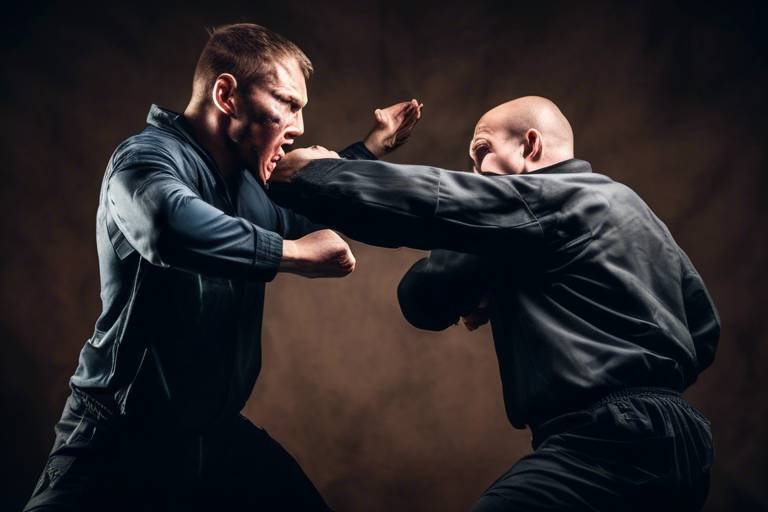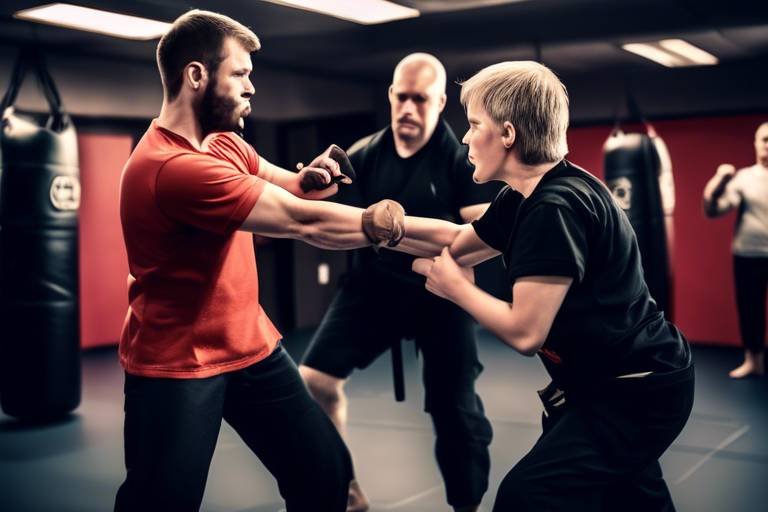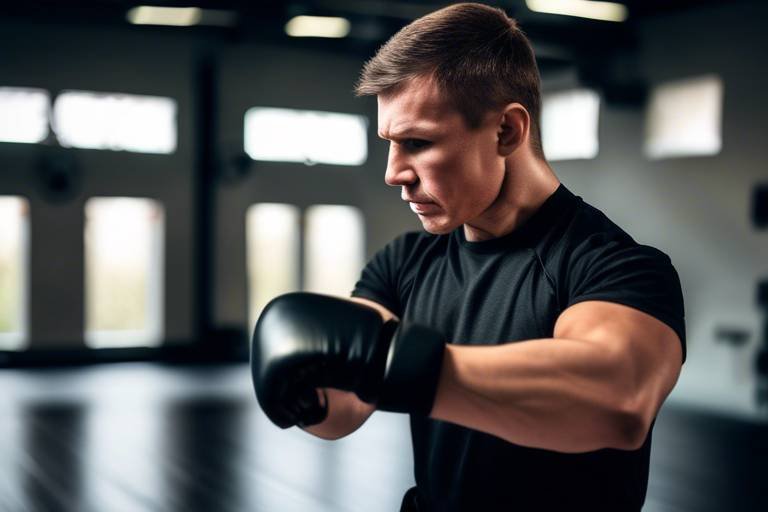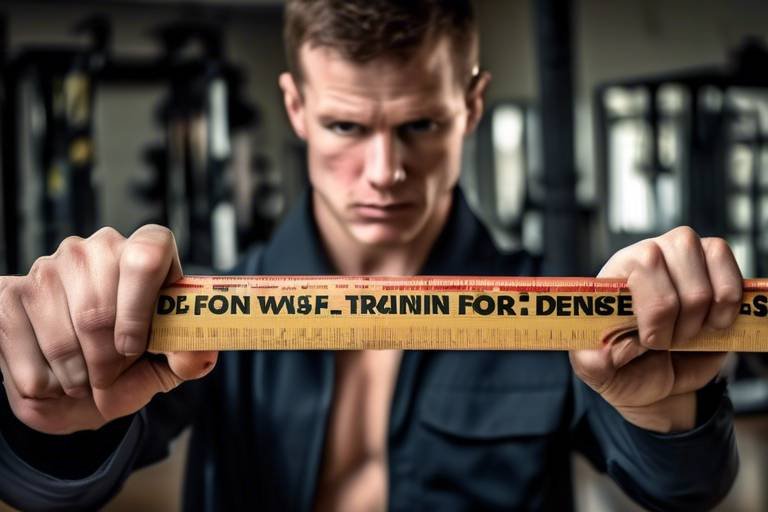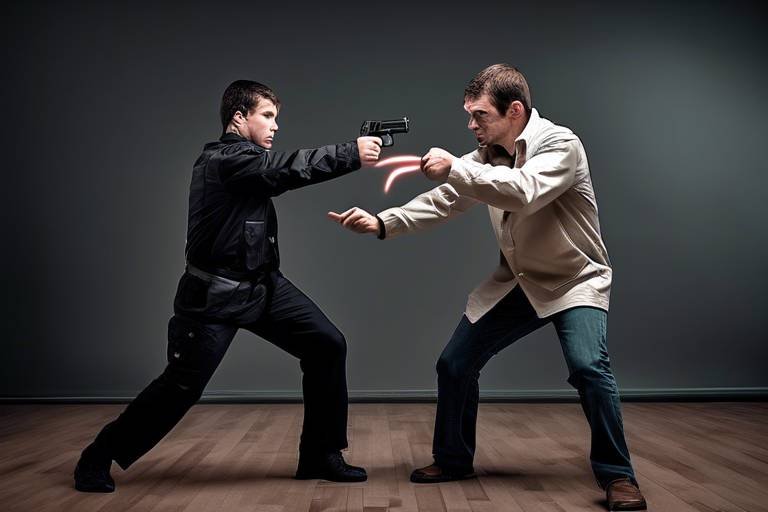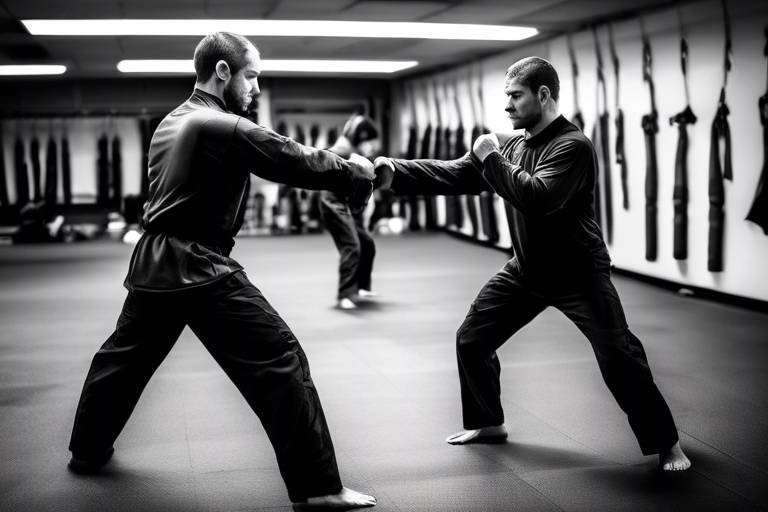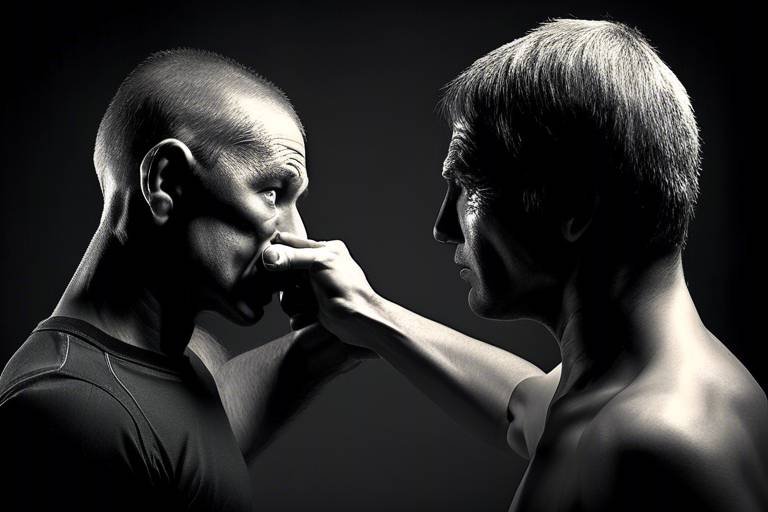Quick Self-Defense Techniques for an Unexpected Attack
In a world where the unexpected can happen at any moment, being prepared for potential threats is not just wise; it's essential. Self-defense isn't solely about physical strength; it's about being aware, making quick decisions, and knowing how to react when faced with danger. This article explores essential self-defense techniques that can be employed in unexpected situations, empowering individuals to protect themselves effectively and confidently during potential threats. Whether you find yourself in a dark alley or a crowded street, these techniques can help you regain control and ensure your safety.
Awareness of your environment is crucial for personal safety. Imagine walking through a park, enjoying the fresh air, when suddenly you sense someone behind you. Instead of panicking, staying alert can make all the difference. Being aware means constantly scanning your surroundings for anything unusual. This doesn't mean you have to be paranoid; it simply involves recognizing potential dangers before they escalate into an attack. Consider the following tips:
- Trust Your Instincts: If something feels off, it probably is.
- Observe People: Pay attention to the behavior of those around you.
- Exit Routes: Always identify the nearest exits in any environment.
By honing your observational skills, you can better prepare yourself for any situation, making it harder for an attacker to catch you off guard.
Learning proper stances can significantly enhance your ability to defend yourself. Think of defensive stances as your foundation; without a strong base, you can easily be knocked down. Here, we discuss various defensive postures that provide stability and readiness in the face of an aggressor. The right stance allows you to react quickly and effectively, whether you're blocking an attack or preparing to strike back.
The high guard position is fundamental in self-defense. This stance involves raising your arms to protect your head and face while keeping your elbows close to your body. By positioning your arms this way, you create a barrier against incoming strikes. Not only does this protect vital areas, but it also enables you to remain prepared to counterattack. Imagine it as putting on an invisible shield that gives you the confidence to face an aggressor head-on.
Effective footwork is essential for maintaining balance and mobility. Just like a dancer needs to move gracefully, you must be able to position yourself effectively during a confrontation. Basic footwork techniques allow you to evade attacks and reposition yourself quickly. Practice moving in small, controlled steps, ensuring that your weight is evenly distributed. This way, you can maintain your balance, making it harder for an attacker to overpower you.
Weight distribution plays a vital role in self-defense. By learning to shift your weight, you can enhance your stability and readiness to respond to an unexpected attack. Picture a tree swaying in the wind; it bends but doesn’t break. Similarly, by shifting your weight appropriately, you can absorb the force of an attack while remaining grounded. This technique is crucial when you need to pivot or dodge an incoming strike.
Knowing where to strike can make a significant difference in self-defense. If you find yourself in a dangerous situation, targeting vulnerable areas on an attacker can create an opportunity for escape. Focus on sensitive spots such as:
- The Eyes: A quick jab can temporarily blind an attacker.
- The Nose: A forceful strike can cause pain and disorientation.
- The Groin: A powerful kick can incapacitate an aggressor.
By aiming for these vulnerable areas, you can maximize the impact of your strikes and increase your chances of getting away safely.
Effective striking techniques can help you defend yourself against an attacker. The beauty of self-defense is that you don't need to be a martial arts expert to protect yourself. Here, we introduce straightforward strikes that are easy to learn and apply under pressure, allowing you to react quickly and decisively.
Palm strikes are powerful yet simple to execute. Instead of relying on your fists, using the heel of your palm can deliver a significant impact without risking injury to your knuckles. To perform a palm strike effectively, aim for an attacker's face or body, targeting the nose or chin. This creates an opportunity to escape while stunning your opponent momentarily. Think of it as a quick and effective way to create distance between you and your aggressor.
Using knees and elbows can be incredibly effective in close-range situations. When an attacker is right in your space, these strikes can maximize impact and disable them quickly. For instance, driving your knee into an attacker's abdomen can knock the wind out of them, giving you precious seconds to flee. Similarly, using your elbow can create a powerful strike when you’re too close for a punch. These techniques are not only effective but can also be executed with minimal training.
Q: Can anyone learn self-defense techniques?
A: Absolutely! Self-defense is for everyone, regardless of age or physical ability. The key is to practice regularly and build your confidence.
Q: Do I need to be physically strong to defend myself?
A: Not at all. Self-defense relies more on technique and awareness than brute strength. Learning to target vulnerable areas can level the playing field.
Q: How can I practice these techniques safely?
A: Consider joining a self-defense class or practicing with a friend. Always prioritize safety and use controlled movements during practice.

Understanding Your Surroundings
Awareness of your environment is crucial for personal safety. Imagine walking down a street, headphones in, completely oblivious to the world around you. Sounds familiar, right? This is a common scenario that can lead to dangerous situations. Staying alert and recognizing potential dangers before they escalate into an attack is not just smart—it's essential. It’s like being a hawk, always scanning the ground for movement. By sharpening your senses, you can spot threats before they become real problems.
To enhance your situational awareness, consider the following tips:
- Stay off your phone: It’s easy to get distracted by notifications, but your phone can wait. Keep your head up and your eyes open.
- Observe your surroundings: Take a mental snapshot of the people around you. Are there any individuals acting suspiciously? Are there escape routes available?
- Trust your instincts: If something feels off, it probably is. Your intuition is a powerful tool—don’t ignore it.
Think of your environment as a chessboard. Each piece represents a potential threat or ally. By understanding the layout and the positions of these pieces, you can make informed decisions about your next move. This awareness not only helps you identify threats but also allows you to navigate your surroundings more confidently. For instance, if you notice a group of people loitering in a dimly lit area, it might be wise to take a different route. Your safety is paramount, and being aware of your surroundings is the first step in protecting yourself.
Additionally, consider the time of day and the location. Urban areas may have different risks compared to rural settings. In bustling cities, crowded places can provide safety in numbers, but they can also be hotspots for pickpockets or aggressive panhandlers. On the other hand, isolated areas might seem peaceful, but they can pose risks if you're alone. Always assess your surroundings and adjust your actions accordingly.
In summary, being aware of your surroundings is like having a sixth sense. It’s not just about seeing; it’s about understanding. By cultivating this awareness, you empower yourself to act decisively in unexpected situations. Remember, the goal is to avoid confrontation whenever possible, but if it comes down to it, being prepared can make all the difference.

Basic Defensive Stances
When it comes to self-defense, posture is everything. Just like a tree stands firm against the wind, a strong defensive stance can be your first line of defense against an unexpected attack. By learning and practicing basic defensive stances, you can significantly enhance your ability to protect yourself. Imagine being in a situation where you suddenly feel threatened; having the right stance can make all the difference between safety and vulnerability.
There are several key defensive stances that can help you maintain balance and readiness in the face of an aggressor. Each stance not only prepares you for an attack but also allows you to counter effectively. Here’s a look at some of the most important stances:
| Defensive Stance | Description |
|---|---|
| High Guard | Arms are raised to protect your head and face while keeping your body ready to move. |
| Side Stance | Position your body sideways to the attacker, making it harder for them to land a direct hit. |
| Back Stance | Weight is shifted onto your back leg, allowing for quick movement and stability. |
Let’s dive deeper into the High Guard Position, which is fundamental in self-defense. In this stance, you raise your arms to shoulder height, keeping your elbows bent and your hands in front of your face. This position protects your vital areas while allowing you to launch a counterattack if needed. Think of it as a shield; your arms are the first line of defense, and you’re ready to respond at a moment’s notice.
Equally important is your footwork. Effective footwork is essential for maintaining balance and mobility during a confrontation. Here’s a quick tip: always keep your feet shoulder-width apart. This stance provides a solid foundation, allowing you to pivot or step back quickly without losing your balance. Remember, in self-defense, being light on your feet can be just as crucial as having strong strikes.
Another critical aspect of defensive stances is weight distribution. Shifting your weight can enhance your stability and readiness. For instance, if you feel an attack coming, shifting your weight onto your back foot can help you prepare to either retreat or launch a quick counter. Imagine a tightrope walker; their ability to maintain balance is all about how they distribute their weight. Similarly, in self-defense, your ability to shift your weight can be the key to staying upright and ready to react.
In conclusion, mastering basic defensive stances is a vital step in empowering yourself against unexpected attacks. By understanding the principles behind these stances and practicing them regularly, you’ll build the confidence and skills necessary to protect yourself effectively. Remember, it’s not just about standing still; it’s about being prepared to move, react, and defend.

High Guard Position
This article explores essential self-defense techniques that can be employed in unexpected situations, empowering individuals to protect themselves effectively and confidently during potential threats.
Awareness of your environment is crucial for personal safety. This section highlights how to stay alert and recognize potential dangers before they escalate into an attack.
Learning proper stances can significantly enhance your ability to defend yourself. This section discusses various defensive postures that provide stability and readiness in the face of an aggressor.
The is fundamental in self-defense. Imagine standing tall, your arms elevated, creating a protective barrier around your face and vital organs. This stance not only shields you but also prepares you to react swiftly. To assume the high guard position, raise your hands to shoulder level, keeping your elbows bent and close to your body. This positioning allows for quick defensive maneuvers while maintaining balance.
In this position, your palms should face towards your opponent, ready to deflect incoming strikes or push away an aggressor. It's like being a fortress; you're not just defending your castle, but you're also ready to counterattack. The high guard position is particularly effective because it minimizes the risk of injury to your face and head, which are prime targets during an attack.
Moreover, maintaining a relaxed yet alert posture is key. Tension can slow your reactions, so practice staying loose. Think of it as being like a coiled spring, ready to unleash energy at a moment's notice. When you’re in the high guard, you’re not just a passive target; you’re a formidable opponent, prepared to defend yourself and create an opportunity to escape.
Effective footwork is essential for maintaining balance and mobility. This part covers basic footwork techniques that allow you to evade attacks and reposition yourself during a confrontation.
Weight distribution plays a vital role in self-defense. Here, we explore how shifting your weight can enhance your stability and readiness to respond to an unexpected attack.
Knowing where to strike can make a significant difference in self-defense. This section identifies vulnerable areas on an attacker that can be targeted for maximum effect and quick escape.
Effective striking techniques can help you defend yourself against an attacker. This section introduces straightforward strikes that are easy to learn and apply under pressure.
Palm strikes are powerful yet simple to execute. This subsection details how to perform palm strikes effectively, targeting an attacker's face or body to create an opportunity to escape.
Using knees and elbows can be incredibly effective in close-range situations. This part explains how to utilize these strikes to maximize impact and disable an attacker quickly.
- What is the high guard position? The high guard position involves raising your arms to shoulder level to protect your face and vital areas while preparing to counterattack.
- Why is footwork important in self-defense? Good footwork allows you to maintain balance and mobility, helping you evade attacks and reposition yourself effectively.
- Where should I aim when striking an attacker? Target vulnerable areas such as the eyes, nose, throat, and groin for maximum effect and to create an escape opportunity.

Footwork Fundamentals
When it comes to self-defense, footwork is often the unsung hero. Just like a dancer needs to master their steps, you too must understand the importance of moving your feet effectively. Good footwork not only helps you maintain your balance but also allows you to create distance from an attacker or close the gap when necessary. Imagine you're in a boxing ring; your footwork determines your ability to dodge punches or land your own strikes. In self-defense, it's no different.
One of the first techniques to master is the side step. This simple yet effective maneuver allows you to evade an incoming attack while keeping your eyes on the aggressor. By shifting your weight to one side and pivoting on your foot, you can quickly move out of the line of attack. Picture yourself as a matador gracefully sidestepping a charging bull; that’s the kind of agility you want to develop!
Another fundamental technique is the backward step. If you find yourself in a tight spot, retreating can give you precious seconds to reassess the situation. You can perform this by stepping back with one foot and then following up with the other, maintaining a strong stance. Think of it as a tactical retreat in a video game—sometimes, stepping back is the best way to prepare for your next move.
To illustrate the importance of footwork in self-defense, consider the following table that outlines key footwork techniques and their benefits:
| Footwork Technique | Description | Benefits |
|---|---|---|
| Side Step | Shifting sideways to evade an attack. | Increases evasion and creates distance. |
| Backward Step | Stepping back to create space. | Allows for reassessment and repositioning. |
| Forward Step | Advancing towards an attacker. | Enables you to close the distance for a counterattack. |
Lastly, let’s not forget the importance of balance. Good footwork is about more than just moving; it’s about moving wisely. Always keep your knees slightly bent and your weight distributed evenly between your feet. This posture allows you to react quickly to any sudden movements from an attacker. Think of it like being on a skateboard; if your weight is centered, you can turn and maneuver with ease. However, if you lean too far in one direction, you risk losing your balance and falling.
In summary, mastering footwork fundamentals is essential for effective self-defense. The ability to move fluidly and maintain balance can be the difference between escaping a dangerous situation and being caught off guard. So, practice these techniques regularly, and remember: your feet are your first line of defense!

Shifting Weight for Stability
This article explores essential self-defense techniques that can be employed in unexpected situations, empowering individuals to protect themselves effectively and confidently during potential threats.
Awareness of your environment is crucial for personal safety. This section highlights how to stay alert and recognize potential dangers before they escalate into an attack.
Learning proper stances can significantly enhance your ability to defend yourself. This section discusses various defensive postures that provide stability and readiness in the face of an aggressor.
The high guard position is fundamental in self-defense. This subsection explains how to position your arms and body to protect vital areas while remaining prepared to counterattack.
Effective footwork is essential for maintaining balance and mobility. This part covers basic footwork techniques that allow you to evade attacks and reposition yourself during a confrontation.
When it comes to self-defense, shifting your weight properly can make all the difference. Imagine yourself standing on a tightrope; if you lean too far in one direction without adjusting your weight, you risk falling off balance. The same principle applies in a self-defense scenario. By mastering the art of weight distribution, you can enhance your stability and readiness to respond to an unexpected attack.
To effectively shift your weight, start by standing in a solid stance. Your feet should be shoulder-width apart, and your knees slightly bent. This position gives you a strong base. When an aggressor approaches, you can shift your weight to either foot, allowing you to move quickly in any direction. This flexibility is crucial for dodging strikes and creating opportunities to escape.
Here are a few key points to remember when shifting your weight:
- Balance is Key: Always ensure that your center of gravity remains low, which will help you maintain balance even when you need to move quickly.
- Practice Makes Perfect: Regular practice of weight shifting in different scenarios will make it second nature when you need to defend yourself.
- Stay Light on Your Feet: Avoid planting your feet too firmly. Being light on your feet allows for quicker movements and better reaction times.
By focusing on these techniques, you can significantly improve your ability to respond to threats. Remember, the goal is to be prepared and adaptable; shifting your weight effectively can help you evade attacks and position yourself advantageously.
Knowing where to strike can make a significant difference in self-defense. This section identifies vulnerable areas on an attacker that can be targeted for maximum effect and quick escape.
Effective striking techniques can help you defend yourself against an attacker. This section introduces straightforward strikes that are easy to learn and apply under pressure.
Palm strikes are powerful yet simple to execute. This subsection details how to perform palm strikes effectively, targeting an attacker's face or body to create an opportunity to escape.
Using knees and elbows can be incredibly effective in close-range situations. This part explains how to utilize these strikes to maximize impact and disable an attacker quickly.
Q: What should I do if I feel threatened?
A: Trust your instincts. If you feel unsafe, try to remove yourself from the situation if possible and seek help.
Q: Can I use self-defense techniques in a non-threatening situation?
A: It's important to only use self-defense techniques when absolutely necessary. Always prioritize de-escalation and avoidance if possible.
Q: How can I practice these techniques safely?
A: Consider enrolling in a self-defense class where you can practice with trained instructors in a safe environment.

Targeting Vulnerable Areas
When it comes to self-defense, understanding the anatomy of an attacker can be the difference between escaping safely and becoming a victim. on an assailant not only increases your chances of incapacitating them but also provides you with a quick opportunity to flee. So, what are these vulnerable areas, and how can you effectively target them?
First off, let's talk about the eyes. Striking an attacker in the eyes can cause temporary blindness and disorientation, giving you precious seconds to escape. A quick jab or even a palm strike aimed at the eyes can be incredibly effective. Similarly, targeting the nose can lead to severe pain and distraction, as a well-placed strike can cause a nosebleed or even break the nose, making it difficult for the attacker to continue their assault.
Another critical area to focus on is the throat. A swift strike to the throat can disrupt breathing and incapacitate an assailant momentarily. The solar plexus, located just below the rib cage, is also a prime target. A strong punch to this area can knock the wind out of an attacker, leaving them gasping for air and vulnerable. Additionally, the groin is often considered a classic target in self-defense. A kick or strike to this area can cause intense pain and is likely to deter the attacker immediately.
For a better understanding, here’s a quick reference table summarizing these vulnerable areas and their effects:
| Vulnerable Area | Effect of Strike |
|---|---|
| Eyes | Temporary blindness and disorientation |
| Nose | Pain, potential bleeding, and distraction |
| Throat | Disrupted breathing and incapacitation |
| Solar Plexus | Knocks wind out, causing vulnerability |
| Groin | Intense pain, likely to deter the attacker |
Remember, while targeting these areas can be effective, the key is to act quickly and decisively. In a high-stress situation, your instincts will guide you, but having this knowledge in your back pocket can empower you to respond effectively. The goal is not to engage in a prolonged confrontation but to create an opportunity for escape. So, keep your head clear, stay aware, and know where to strike!

Simple Striking Techniques
When it comes to self-defense, knowing a few can make a world of difference. Imagine you're in a tight spot, and the adrenaline is pumping – the last thing you want is to be fumbling around trying to remember complicated moves. Instead, let’s focus on straightforward strikes that are not only easy to learn but also effective in real-life situations. These techniques can empower you to defend yourself confidently and create an opportunity to escape.
One of the most effective techniques you can master is the palm strike. Why a palm strike, you ask? Well, it’s powerful, simple, and it doesn’t require much training to execute. To perform a palm strike, raise your hand with your fingers extended and your palm open. Aim for vulnerable areas such as the attacker's nose or jaw. When you strike, use the base of your palm to deliver a quick, upward motion. This technique not only helps you maintain distance but also allows you to follow up with another move if necessary. Think of it like a quick jab that gives you the space to escape.
Next up are the knee and elbow strikes. These are particularly useful in close-range encounters, where space is limited. Imagine you're in a crowded area or facing an aggressor who has closed the distance. In such situations, your knees and elbows become your best friends. To execute a knee strike, lift your knee sharply towards your attacker's midsection or face. This sudden movement can catch them off guard and cause significant pain, giving you a moment to flee. On the other hand, elbow strikes are incredibly effective when you’re facing someone directly in front of you. Simply bring your elbow down onto their head or face with force. The surprise and impact can be enough to disorient them, allowing you to make your escape.
Here's a quick comparison of these striking techniques:
| Technique | Best Used For | Key Benefits |
|---|---|---|
| Palm Strike | Defending against an attacker at arm's length | Easy to learn, creates distance, targets vulnerable areas |
| Knee Strike | Close-range encounters | Powerful, targets midsection, can create an escape opportunity |
| Elbow Strike | Direct confrontation | High impact, effective in tight spaces, disorients attacker |
Remember, the goal of these techniques isn't to engage in a prolonged fight but to create an opening for you to escape safely. In a self-defense scenario, you want to be the one who walks away unscathed. Always prioritize your safety and be aware of your surroundings. The more you practice these techniques, the more instinctive they will become, and you’ll feel more confident in your ability to defend yourself when it matters most.
Q: Do I need to be physically strong to use these techniques?
A: Not at all! Self-defense techniques like palm strikes and knee strikes rely more on technique and speed than brute strength. With practice, anyone can effectively use these methods.
Q: How can I practice these techniques safely?
A: It’s best to practice with a partner in a controlled environment, like a self-defense class or martial arts dojo. Always use proper protective gear and ensure that both parties understand the drills.
Q: What if I can't remember these techniques during an attack?
A: In high-stress situations, it’s common to forget details. Focus on the basics and trust your instincts. Repeated practice will help make your responses more automatic.

Palm Strikes
Palm strikes are not just some flashy move you see in action movies; they are practical and effective self-defense techniques that anyone can master. The beauty of a palm strike lies in its simplicity and power. When executed correctly, it can deliver a significant impact to your attacker while minimizing the risk of injury to yourself. Imagine being in a tight spot, and instead of throwing a punch, you use the palm of your hand to strike. It’s like using a hammer instead of a delicate tool—sometimes, brute force is what you need!
To perform a palm strike effectively, you should follow these steps:
- Position Your Body: Stand with your feet shoulder-width apart, knees slightly bent, and your body weight evenly distributed. This stance provides stability and readiness.
- Raise Your Hands: Bring your hands up in front of you, elbows bent. Your palms should be facing outward, ready to strike.
- Target the Attacker: Aim for sensitive areas on your assailant’s body, such as the nose, chin, or solar plexus. These areas are not only vulnerable but can also cause disorientation.
- Strike with Force: As you strike, push through with your palm, using the heel of your hand to make contact. This technique generates more power than you might expect!
One of the most significant advantages of palm strikes is that they reduce the risk of injury to your own hands, unlike traditional punches. When you punch, there’s always a chance of fracturing your knuckles, but with palm strikes, you’re using a larger surface area to deliver the blow. It’s like trading in a fragile glass for a sturdy rock—much less likely to break!
In a real-life scenario, the element of surprise can work in your favor. If an attacker approaches you unexpectedly, a quick palm strike to the face can stun them long enough for you to escape. Think of it as a quick reset button in a video game—you hit it, and it gives you a chance to regroup and plan your next move.
Remember, practice makes perfect! Whether you’re in a self-defense class or just practicing in front of a mirror, the more you practice palm strikes, the more instinctive they will become. You’ll feel more confident knowing that you have a powerful tool in your self-defense arsenal. And who knows? Maybe you’ll even impress your friends with your newfound skills!

Knees and Elbows
This article explores essential self-defense techniques that can be employed in unexpected situations, empowering individuals to protect themselves effectively and confidently during potential threats.
Awareness of your environment is crucial for personal safety. This section highlights how to stay alert and recognize potential dangers before they escalate into an attack.
Learning proper stances can significantly enhance your ability to defend yourself. This section discusses various defensive postures that provide stability and readiness in the face of an aggressor.
The high guard position is fundamental in self-defense. This subsection explains how to position your arms and body to protect vital areas while remaining prepared to counterattack.
Effective footwork is essential for maintaining balance and mobility. This part covers basic footwork techniques that allow you to evade attacks and reposition yourself during a confrontation.
Weight distribution plays a vital role in self-defense. Here, we explore how shifting your weight can enhance your stability and readiness to respond to an unexpected attack.
Knowing where to strike can make a significant difference in self-defense. This section identifies vulnerable areas on an attacker that can be targeted for maximum effect and quick escape.
Effective striking techniques can help you defend yourself against an attacker. This section introduces straightforward strikes that are easy to learn and apply under pressure.
When it comes to self-defense, knee and elbow strikes are among the most powerful techniques you can employ, especially in close-range situations. These strikes are not only effective but also relatively easy to execute, making them ideal for anyone, regardless of their physical training. Imagine being in a tight spot where you can’t throw a punch; that’s where your knees and elbows come into play. They are like your secret weapons, ready to unleash power when you need it most!
To effectively use your knees, you should aim for your attacker's midsection or even their face if the opportunity arises. When you lift your knee, it’s not just about the upward motion; you want to drive it forward with force. This can catch an attacker off guard and create a moment for you to escape. Similarly, elbow strikes can be devastating. The elbow is a hard bone, and when you swing it toward an opponent, it can cause significant damage. Think of it as a hammer; it doesn’t need to be swung wide to be effective. Just a quick, tight movement can deliver a powerful blow.
Here’s a quick breakdown of how to execute these techniques effectively:
- Knee Strikes: Lift your knee sharply while thrusting your hips forward. Aim for the solar plexus or chin.
- Elbow Strikes: Use the point of your elbow to strike. You can swing it sideways or upward, targeting the face or head for maximum impact.
In addition to the physical aspect, using your knees and elbows requires a mental component. You must be aware of your surroundings and ready to react. Practice makes perfect; the more you train these movements, the more instinctive they will become. Think of it like riding a bike; once you learn, you never forget. So, get comfortable with these techniques, and they will serve you well when it matters most.
Q1: Can anyone learn these techniques?
A1: Absolutely! Self-defense techniques like knee and elbow strikes can be learned by anyone, regardless of fitness level. The key is practice and confidence.
Q2: Are there any risks involved in using these strikes?
A2: While effective, using knee and elbow strikes does come with risks, especially if not executed properly. It’s always best to train under a qualified instructor to minimize injury.
Q3: How can I practice these techniques safely?
A3: You can practice these techniques on a punching bag or with a partner wearing protective gear. Always warm up and cool down to avoid injuries.
Frequently Asked Questions
- What should I do if I feel threatened in a public place?
If you ever feel threatened, the first step is to stay calm and assess your surroundings. Look for exits, potential safe spots, or people who might help. Trust your instincts and don't hesitate to call for help if you need it. Awareness is key!
- How can I improve my self-defense skills?
Improving your self-defense skills involves regular practice and training. Consider enrolling in self-defense classes or martial arts. Additionally, practicing basic techniques at home can enhance your confidence and readiness for unexpected situations.
- What are the most effective vulnerable areas to target on an attacker?
Some of the most effective vulnerable areas include the eyes, nose, throat, and groin. Striking these areas can create an opportunity for you to escape. Remember, the goal is to disable the attacker long enough for you to get away safely.
- Is it necessary to learn complex techniques for self-defense?
Not at all! Simple techniques, like palm strikes or using your knees and elbows, can be incredibly effective. The key is to focus on what you can execute under pressure rather than trying to master complex moves.
- How can I stay aware of my surroundings?
Staying aware involves actively observing your environment. Practice scanning the area for potential threats, keeping your head up, and avoiding distractions like your phone. It’s like being a detective in your own life—always looking for clues!
- What should I do if I can't escape an attack?
If escape isn't an option, focus on defending yourself. Use the techniques you've learned to protect vital areas and strike vulnerable spots. Remember, your goal is to create an opportunity to escape, not to engage in a fight.

